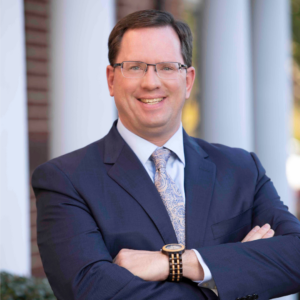All Is Well—and Getting Better
A national consultant on long-term care wellness programs/centers looks ahead BY JAN MONTAGUE, MGS, AND KIM PETERS, MGS |
| Since 1995, our firm has helped senior living communities develop effective wellness cultures and programs and, for some, state-of-the-art wellness centers. This past year we have noticed some exciting new developments in wellness culture, behavior-specific programming, wellness center planning and design, staffing, and other industry-wide trends. These developments are supported by information that we have received while serving on Advisory Boards for the International Council on Active Aging and the National Council on Aging’s Health Promotion Institute, and by judging several award programs: National Mature Media, NuStep Pinnacle, and National Health Information. It looks as though 2006 will be an exciting year for senior living communities interested in promoting whole-person wellness concepts for all their residents. It is now becoming commonly accepted: We age successfully by incorporating wellness concepts and beliefs into all aspects of our lives. Simply defined, wellness is the integration of an individual’s multiple dimensions into positive and meaningful activities. This approach to health-a comprehensive wellness model-requires a lifestyle perspective that includes self-responsibility for emotional, intellectual, physical, social, spiritual, and vocational health; an optimistic outlook; and a can-do attitude. Wellness is about adopting a whole-person health philosophy throughout your entire life. |
| Glacier Hills Retirement Community, Ann Arbor, Michigan Tara Gilbert, Director of Wellness and Rehabilitation: |
| “When I was hired in 2002, our CEO wanted to develop a real wellness center. The facility had had activities for years, but this would be a more complete focus on wellness. We did some fund-raising and a lot of staff training and got the program started in January 2003. We have a variety of activities matched to each of the six dimensions of wellness and, for the long-term care residents on our campus, these are conducted in their facilities through the recreational therapy department. “After about a year we wanted to see if we were ‘walking the talk’ in wellness and did a campuswide survey of residents. Overall our Wellness Report Card gave us an 86, or a high B, average, which we thought was pretty good for starters. Residents and staff said we needed to do more education about wellness, particularly in the long-term care and rehab center. Some wanted more intellectually stimulating programs. Many appreciated the greater opportunity for socialization, but some said this was limited somewhat by the physical environment. “Food was an item of major importance, and we’ve since developed a direct dining program where food is served hot in the individual units by people who have been trained as hospitality-type wait staff. Part of this reflects that the care and rehab building is more than 30 years old and we’ve simply outgrown some aspects of the building. “We don’t call this a nursing center anymore; it is a care and rehab center. We don’t want to be seen as a nursing home because people would have the image that it’s a place where they would come to die. We want to provide our residents with whatever they find brings meaning to their lives, recognizing that this is not ‘the end’ but rather a continuing journey.” |
| The Growth of Wellness During the past decade, many senior living communities have started fitness and wellness programs. Many offer walking paths, massage, strength and cardio equipment, swimming pools, computer classes, photo labs, and meditation gardens. A few communities, though, have chosen to do much more. As they encourage their residents to adopt a wellness philosophy (figure) throughout life, they have decided to spread a wellness philosophy throughout their entire organizations. By changing their perspective on wellness, they now concentrate on “what people can do,” instead of “what people can’t do.” And by this, they mean all people. The lesson they have learned is that everyone benefits from a wellness program-residents, staff, and family members. Some general advances that have occurred in recent years:
Innovation continues in programming:
Planning efforts are becoming more sophisticated:
Closer attention is being paid to employing qualified, appropriate personnel for these centers:
Senior care in general is trending toward broader, deeper approaches to wellness:
|
| The Connection at Twin Lakes, Montgomery, Ohio Christel Cousino, Manager: “Twin Lakes is located on 56 acres in beautiful Montgomery, Ohio. Three distinct campus neighborhoods offer something for everyone-from villa homes and apartments to assisted living and nursing care. Embracing a wellness philosophy, Twin Lakes encourages all residents to ‘be the best they can be’ by stimulating all six dimensions of wellness. Holding true within the wellness philosophy, associate name badges say ‘Wellness Specialist’ and give the area in which each specializes. We believe that our associates are very well versed in the six dimensions of wellness. “The Connection is located centrally, directly across from the clinic and physical/occupational therapy areas, and down the hall from assisted living and nursing care. Long-term care residents have direct access, including wheelchair access, to the center. The two-level facility is just under 11,000 square feet. To the left of the welcome area is a spacious juice bar, with many opportunities for social interaction. Men’s and women’s locker rooms lead directly into the aquatic area, with towel service provided. A family changing room is located outside the aquatic area for anyone who may need assistance from his or her spouse. “The second floor houses the Individual Fitness Room with performance trainers, treadmills, NuStep, and Keiser strength-training equipment, allowing stretching, standing, or sitting using pneumatic equipment; Integrative Therapy Rooms with massage therapy and reflexology; and the Movement and Education Room for various classes. Our facility is open for membership to interested individuals throughout the community who are age 50 and above.” |
| Conclusion We now know, based on current research, that the wellness model is not a passing fad. Moreover, wellness is more than programs and services designed to enhance an individual’s emotional, intellectual, physical, social, spiritual, and vocational dimensions. Society is beginning to embrace a new perspective: Call it vital aging. Seniors are indeed becoming role models for younger cohorts because, even in advanced age, they are achieving desirable health outcomes by combining whole-person wellness principles with self-responsibility for health. And, thanks to growing acceptance of the wellness philosophy, people are more likely to be defined by what they can do rather than what they can’t do. |
|
| It is clear that, in coming years, more and more senior living communities and senior service organizations will adopt wellness as their core philosophy. By choosing wellness, they will set the new standard by promoting successful living. During 2006, progressive senior living communities will develop a greater understanding of whole-person wellness concepts. By choosing wellness, these communities will set a new standard for the field, thereby truly promoting senior living. Jan Montague, MGS, is President and Kim Peters, MGS, is Senior Project Director, Montague, Eippert & Associates, specialists in the design, development, and implementation of wellness cultures, programs, and centers for seniors. For further information, call (859) 442-5009 or visit www.janmontague.com. To send your comments to the authors and editors, e-mail montague1205@nursinghomesmagazine.com. To order reprints in quantities of 100 or more, call (866) 377-6454. References |
I Advance Senior Care is the industry-leading source for practical, in-depth, business-building, and resident care information for owners, executives, administrators, and directors of nursing at assisted living communities, skilled nursing facilities, post-acute facilities, and continuing care retirement communities. The I Advance Senior Care editorial team and industry experts provide market analysis, strategic direction, policy commentary, clinical best-practices, business management, and technology breakthroughs.
I Advance Senior Care is part of the Institute for the Advancement of Senior Care and published by Plain-English Health Care.
Related Articles
Topics: Articles











